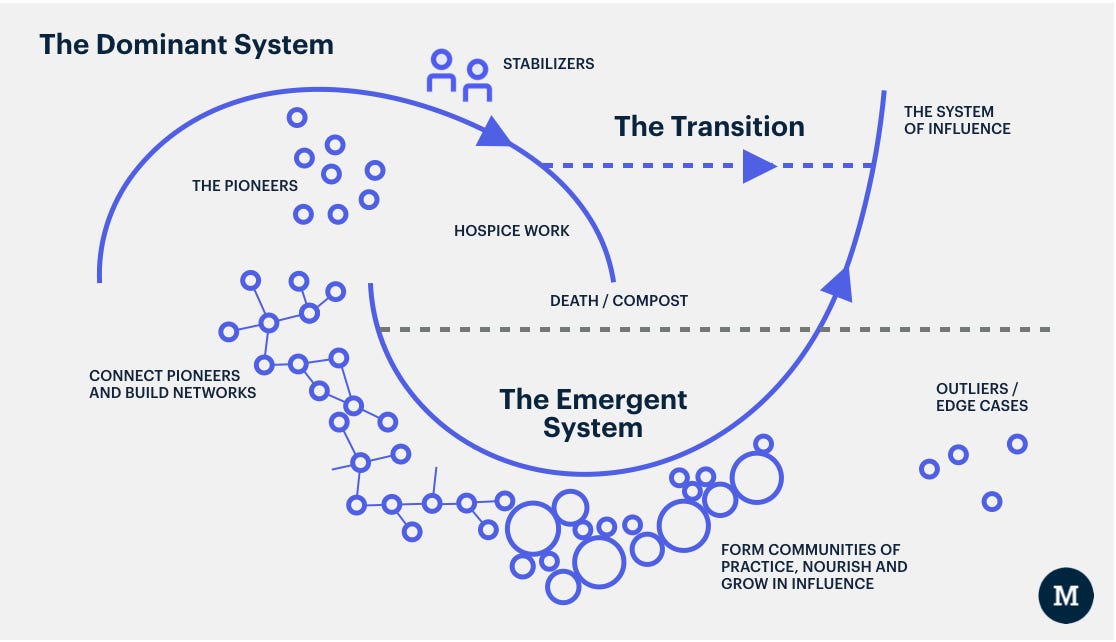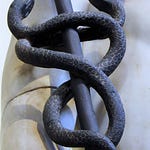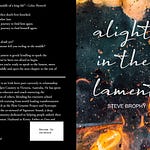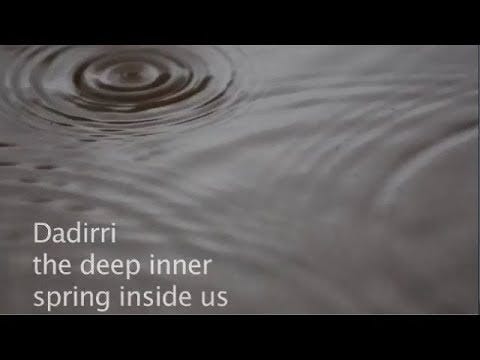Hello Hedge School,
It's been a while. A huge amount of gratitude to one of my favourite humans, Lara, for the gift of her prose, dulcet tones and pertinent inquiry. It brings me great joy to see a penned letter from Lara in my inbox each week.
Personally, I've unhooked the 'always on' trailer and taken a really long break.
I found myself wasted of words. Wasted of energy. Waste has been the dominant theme. A sick in-law wasting away. Projects decaying. Moments squandered through worry. Relationships dying.
The cycle of decay, compost for growth. All natural. All compost.
Compost has been a big teacher this year. Capturing our food and garden waste has schooled me about nature's relationship to waste.
“Nothing in nature is disposable. Part of the resilience of nature is that nothing in nature is wasted. The earth swallows it all through mouths or soil or water. This is such a simple beautiful truth. Everything is food, fuel, compost, a home for some other creature.”
Adrienne Maree Brown - Emergent Strategy
Nature wastes nothing. Think about that for a while. Now think about how much humans waste. Waste, from the Latin word "vastare" meaning 'empty' or 'desolate', is deeply woven into the fabric of human existence. Holes in the ground are filled with our squandered opportunities. We get wasted. We waste people. We squander more than any other creature on this planet. And it's part of the reason we are in the current climate mess.
So why are we so wasteful?
A few reasons spring to mind.
Our obscene obsession with hacking growth. Waste is the precessional side effect of fast tracking growth.
Our disconnected relationship with nature. We visit nature like we would a holiday destination, curate nature into unnatural landscapes that suit our taste and see overgrown forests as desolate.
Our infatuation with our own nature. We are too busy personal growing ourselves to pay attention to what we perceive as inanimate.
“How did the natural world become less real to us, more mundane and less sacred and beautiful? This is partly because we live so much inside ourselves, in a state of abstraction. Our experience of the world is therefore less direct and immediate. But this loss of vividness is also related to energy. Our powerful sense of ego — and our constant thought-chatter — uses up a massive amount of energy, and as a result there’s little energy available for us to use through perception. Our attention was switched off to the world around us so that we didn’t have to “waste” any energy in perceiving it. As a result, the world became an inanimate place to us. We no longer sensed the aliveness of rivers, rocks, and the earth itself. We no longer sensed the sentience of trees and other living things.”
Steve Taylor - The Leap
When I study my compost bin, I see aliveness and activity among the decay. Food waste, green waste, brown waste, all come together to decay with dignity. To surrender their animate. A passing of the guard supporting the new through dense nutrients. When I get the ratio right, I can feel the heat rise from the bin as it goes to work. Nature's alchemy at work. I also know the smell when I don't get the balance right. A deep lesson in tempering and balance.
When it's ready, I use my bare hands to work the compost into the soil. I feel it honours the journey. My hands gift the compost back to the soil. And nature's growth cycle continues on. As a result, our small waste bin, collected weekly, is never more than a third full and my garden is thriving in tribute.
What others perceive to be as waste is a resource.
“What we call waste, nature sees as indispensable building blocks for other processes. Waste is usually a lost opportunity that can be repurposed to restore balance to a system and produce wealth.”
Jay Harman - The Shark’s Toothbrush
Growth and decay are deeply entwined. We are always growing and dying. A tightrope of balance. A beautiful way to view this tightrope is Berkana Institute's "Two Loops" model. The Two Loops model highlights the need to "help a system decay with dignity so that the new system can emerge." Paying close attention to the death cycle is a necessity for systems change. We are usually too busy to take notice of the by-products of our growth at all costs approach to life.
How do we help balance the equation?
What do we notice when we pay deep attention to the death cycle?
The below video will give you a great introduction to the Two Loops model.
Waste is a resource. An expensive one in many facets. Reducing waste helped a little car company from Japan called Toyota compete on a global scale with monoliths such as Ford and General Motors. Reducing 'muda', the Japanese word for waste became a linchpin of Toyota's Production System. The creator, Taichi Ohno highlighted seven forms of waste and worked progressively to reduce or eliminate them.
Transportation
Inventory
Motion
Waiting
Overproduction
Over processing
Defects
When you lay Nature's methodology1 over this, you see lots of similarities.
Nature runs on sunlight.
Nature uses only the energy it needs
Nature fits form to function
Nature recycles everything
Nature rewards cooperation.
Nature banks on diversity.
Nature demands local expertise
Nature curbs excesses from within
Nature taps the power of limits.
There is tempering of new and old. Using only what it is needed. Recycling everything. Working within limits. Nature is marvelous at this. Of the elements available on the Periodic table, humans use them all, often with brute force. Nature uses four.
“Our current industrial growth society uses pretty much all the elements in the periodic table, while the fantastic diversity and complexity of life on Earth is by and large based on the low-energy intensive cycling of only four elements: carbon, oxygen, hydrogen and nitrogen. All other elements will eventually “run out” as we will not have the energy available to recycle them and separate them out from the composite materials and products we transformed them into with excessive fossil energy use, only to dump them into landfills shortly after.”
Daniel Christian Wahl - Circular Economies & Regenerative Cultures
Less but better. Nothing wasted. Nothing squandered. This truly honours with dignity the decay of the old.
Working with the Two Loops model allows us to make sure that we consciously balance the growth cycle, paying closer attention to the energetic exchange and the impact of our actions. Paying closer attention to decay of the old. Using all the lessons learned.
Honouring the animate/inanimate threshold crossing with dignity.
Lots of lessons to learn.
Till next time,
Steve
Janine M. Benyus - Biomimicry














Share this post